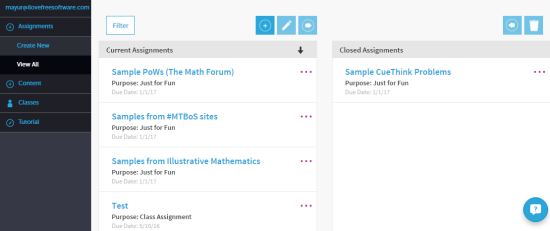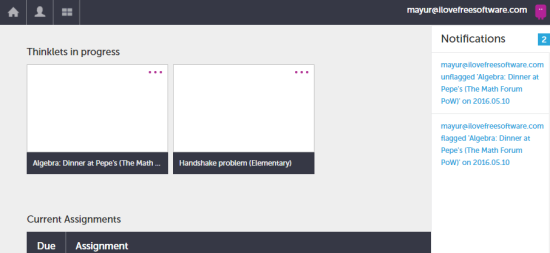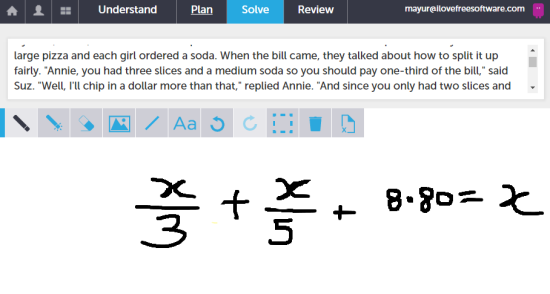Cuethink is a free web application which uses George Polyas 4 phase problem solving technique to teach Maths to students effectively. Teachers can write problems or import them. Students have to solve the problems following a 4 step approach where they have to show how they dealt the problem and write the estimated answer. This whole process is recorded as a ‘Thinklet’ which can be reviewed by the teacher and the student’s peers. Annotations on the Thinklet video can give the students feedback and boost their morale in the problem solving domain.
This 4-step technique helps teachers understand how a student thinks. This is much better than wondering what went wrong when teachers only pay attention at the student’s wrong answer. Teachers can backtrack each move of the student. This tells them exactly where the student misunderstood the question and can help overcome that deviation efficiently.

For a more traditional approach to teach Maths and Science to students, you can check out Expii. Expii focuses on more than one explanation for a question. This helps students with different approaches understand the problem effectively.
So let’s take a better look at what Cuethink can do.
How to Use Cuethink to Teach Maths to Students:
Cuethink is easy to use even if it looks a bit complex. You can log in using a student account or a teacher’s account. Since teachers can create mathematical problems and review them as students, let’s check out Cuethink using a teacher’s account.

When you start as a teacher, you’ll have to choose the grade of the class you are teaching and subsequently name it. A class code will be generated which will allow students to join your class. You will start with Student Mode but I suggest you switch it to Educator Mode by clicking the purple button on the top left.

There is a panel on the left where you can create mathematical problems which can be shared among Cuethink users, create assignment and manage classes. To create shared content, click on ‘Create New‘ under Content. Choose the class, source of the question, topic of the question and the common core state standards. On the next page, you can add the question, format it, add images and even add a checklist to help the students.
You can add the created content on the Assignment page or create a new assignment just like you created a shared content.
How Cuethink helps Students in Solving Math Problems
As mentioned earlier there are 4 phases of problems solving in Cuethink. These are: Understand, Plan, Solve and Review.

During the Understand phase, students can highlight the question to focus better. Students will have to tell the teacher what they notice about the question and how they will approach it with their critical thinking. Consequently, students have to write the calculated answer.

On the next phase ‘Plan’, students have select what strategy they used to solve the problem. They can explain how they approached the question in the text box provided. Moreover, they can illustrate and solve the question in the next phase called ‘Solve’. Students can record how they solved the question so teachers can review the students’ methods in the Review tab.
Final Words
Cuethink is way different than other educational web application since it focuses more on how a student thinks rather than analyzing his final answer. The application could have been designed better. For example, placing the estimated answer on ‘Solve’ rather than ‘Understand’ wouldn’t have students rush to find the answer before analyzing their approach. However, I find Cuethink to be an awesome concept and that is why I give it 5 stars.
Try Cuethink here.